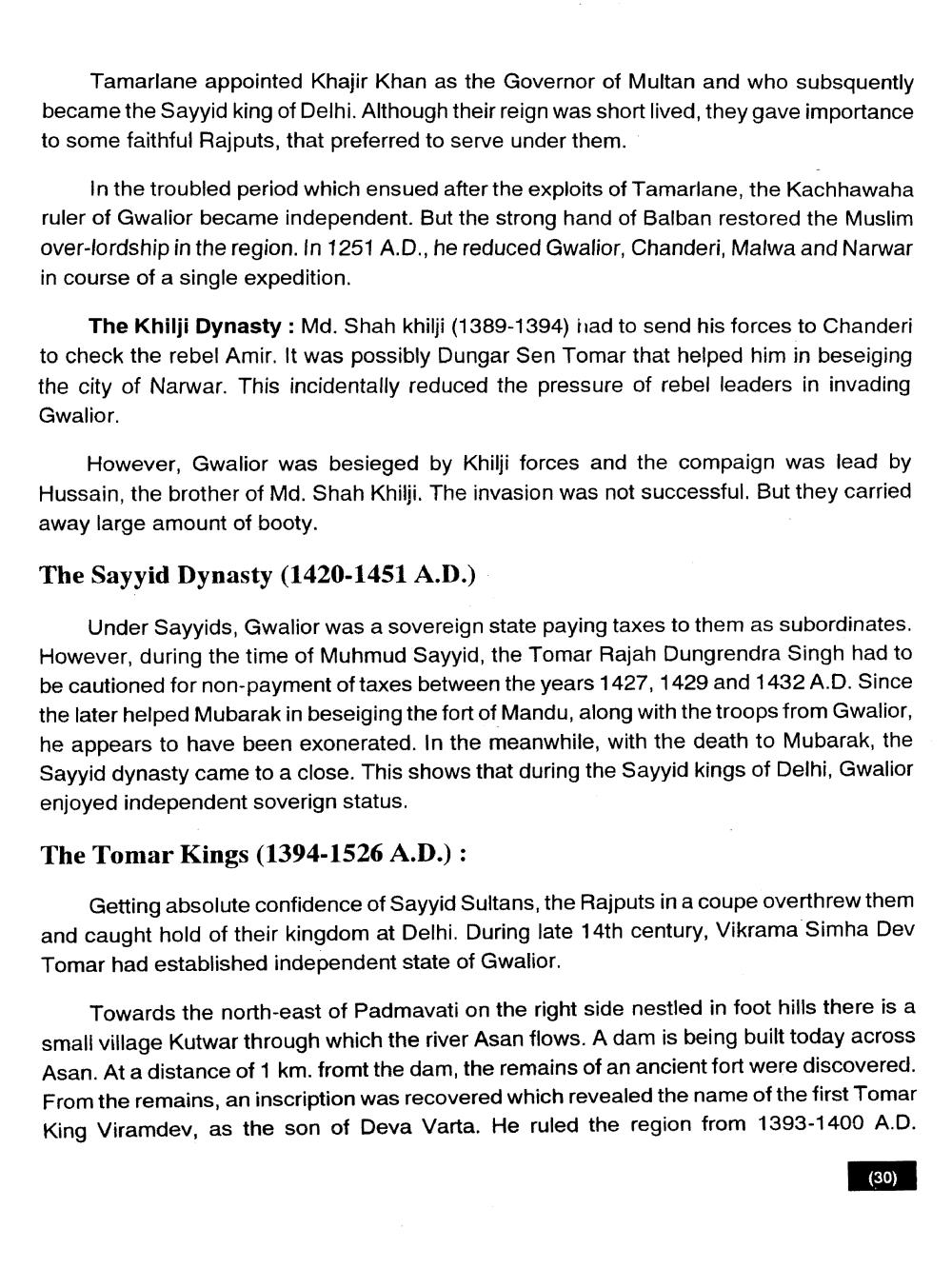________________
Tamarlane appointed Khajir Khan as the Governor of Multan and who subsquently became the Sayyid king of Delhi. Although their reign was short lived, they gave importance to some faithful Rajputs, that preferred to serve under them."
In the troubled period which ensued after the exploits of Tamarlane, the Kachhawaha ruler of Gwalior became independent. But the strong hand of Balban restored the Muslim over-lordship in the region. In 1251 A.D., he reduced Gwalior, Chanderi, Malwa and Narwar in course of a single expedition.
The Khilji Dynasty : Md. Shah Khilji (1389-1394) nad to send his forces to Chanderi to check the rebel Amir. It was possibly Dungar Sen Tomar that helped him in beseiging the city of Narwar. This incidentally reduced the pressure of rebel leaders in invading Gwalior.
However, Gwalior was besieged by Khilji forces and the compaign was lead by Hussain, the brother of Md. Shah Khilji. The invasion was not successful. But they carried away large amount of booty.
The Sayyid Dynasty (1420-1451 A.D.)
Under Sayyids, Gwalior was a sovereign state paying taxes to them as subordinates. However, during the time of Muhmud Sayyid, the Tomar Rajah Dungrendra Singh had to be cautioned for non-payment of taxes between the years 1427, 1429 and 1432 A.D. Since the later helped Mubarak in beseiging the fort of Mandu, along with the troops from Gwalior, he appears to have been exonerated. In the meanwhile, with the death to Mubarak, the Sayyid dynasty came to a close. This shows that during the Sayyid kings of Delhi, Gwalior enjoyed independent soverign status.
The Tomar Kings (1394-1526 A.D.) :
Getting absolute confidence of Sayyid Sultans, the Rajputs in a coupe overthrew them and caught hold of their kingdom at Delhi. During late 14th century, Vikrama Simha Dev Tomar had established independent state of Gwalior.
Towards the north-east of Padmavati on the right side nestled in foot hills there is a small village Kutwar through which the river Asan flows. A dam is being built today across Asan. At a distance of 1 km. fromt the dam, the remains of an ancient fort were discovered. From the remains, an inscription was recovered which revealed the name of the first Tomar King Viramdev, as the son of Deva Varta. He ruled the region from 1393-1400 A.D.
(30)




